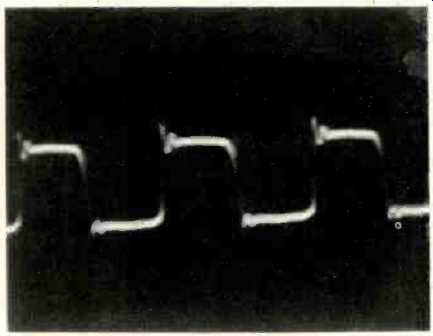
Manufacturer's Specifications:
Frequency Response: 10 Hz to 20 kHz, ±-1dB; 20 to 40 kHz, +2,-5 dB.
Compliance: 50 cm/dyne x 10^-6
Vertical Tracking Angle: Nominal, 20 degrees.
Channel Separation: 1 kHz, 30 dB; 20 Hz to 20 kHz, 20 dB.
Weight: 5.5 grams.
Recommended Tracking Force Range: 1 to 1 1/2 grams.
Inductance: 150 mH per channel.
Resistance: 300 ohms.
Price: $250.00; replacement stylus, $125.00.
The Sonus Dimension 5 is now the top-of-the-line cartridge from Sonic Research, and its main difference from others in the Series II range is an unusually shaped, highly polished jewel stylus called "Lambda." This is a chisel-shaped design and is mounted in a short low-mass aluminum cantilever. The micro-machined armature is said to have the lowest possible dynamic mass for the required efficiency, and the high-frequency resonance of the moving mass has been pushed up to the 35 to 40 kHz range. The result is that very little damping is needed, and so tracking force can be reduced accordingly. Because the Lambda stylus is mounted to form a smooth extension to the cantilever, in stead of making an angular projection, the single transmission path is claimed "to achieve a degree of phase coherence impossible in any stylus-cantilever design now in use." A circular elastomeric unipivot suspension provides equal freedom of movement over 360 degrees. The cartridge is nicely packaged in a small, padded wooden box and comes complete with mounting hard ware and a good stylus brush.
Measurements
For test purposes, the cartridge was mounted on a Sony PS-X800 SLT turntable, and the tracking force set to one gram--the lowest recommended figure. The first measurement performed was for frequency response, and the results are shown in Fig. 1. Output began to rise from about 13 kHz, and a further check with a wide-range test record, the CBS STR-120, revealed that the response continued up to about 30 kHz before rolling off gradually.
Separation was 25 to 30 dB in the midrange, decreasing to a quote respect able 17.5 dB at 20 kHz. The square-wave response, shown in Fig. 2, shows a fast rise-time with a single overshoot that is well damped.
Trackability has to be rated as good to excellent. Though the tracking force needed to be increased to 1.5 grams, the Dimension 5 successfully negotiated both the Shure Obstacle Course--Era III's bands four and five and the Deutsches Hi-Fi Test Record No. 2 300-Hz, 80-micron band. IM distortion was quite low--less than 2% at 25 cm/S velocity as measured with the Shure TTR-103 disc.

Fig. 1 --Frequency response and separation.

Fig. 2 --Square-wave response.
Output was 4.2 mV at 1 kHz for a 5 cm/S test signal, so that there should be no level or sensitivity problems with a standard preamp or receiver. Channel balance was within 0.5 dB, and thus there will be no shifting image with changes in frequency. Inductance was a relatively low 150 mH, so that a capacitive load should not be at all critical. All of my measurements were made with a total load of 250 pF, but increasing the capacitance to 450 pF produced no significant change in the response in the audio band.
Use and Listening Tests
My listening tests were made with a wide variety of records, which included Hammond Castle Pipe Organ, Decibel DB-1000; Earl Klugh's Finger Paintings, Mobile Fidelity MFSL 1-025, and Fiedler and the Boston Pops doing Tchaikovsky's Capriccio Italien, Crystal Clear CCS-7003. One disc which sounded particularly lifelike was Amanda McBroom's West of Oz on Sheffield Lab 15. Incidentally, Peter Pritchard of Sonus tells me that the Dimension 5 is used by Telarc to demonstrate the can non shots on their 1812.
Transient response was excellent, while bass was tight and well-defined.
The stereo image was stable with a good sense of depth so that large-scale sym phonic works were reproduced with a pleasing spaciousness. Occasionally the sound quality had the extra "zing" or "front row center" sort of clarity associated with the rising high end of moving-coil cartridges.
All in all, I must rate the Dimension 5 as a most musical sounding phono cartridge. There are a few which will score equal or higher marks on the trackability tests, but in the distortion measurements, I don't know of any cartridge which comes in with better results.
--George W. Tillett
(Source: Audio magazine, Mar. 1982)
Also see: Sonus Blue Label Phono Cartridge (April 1977)
Dual Model 1249 Automatic Turntable (Feb. 1977)
ADC Model LMF-2 Tonearm & ZLM Phono Cartridge (Jan. 1979)
= = = =